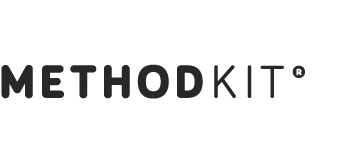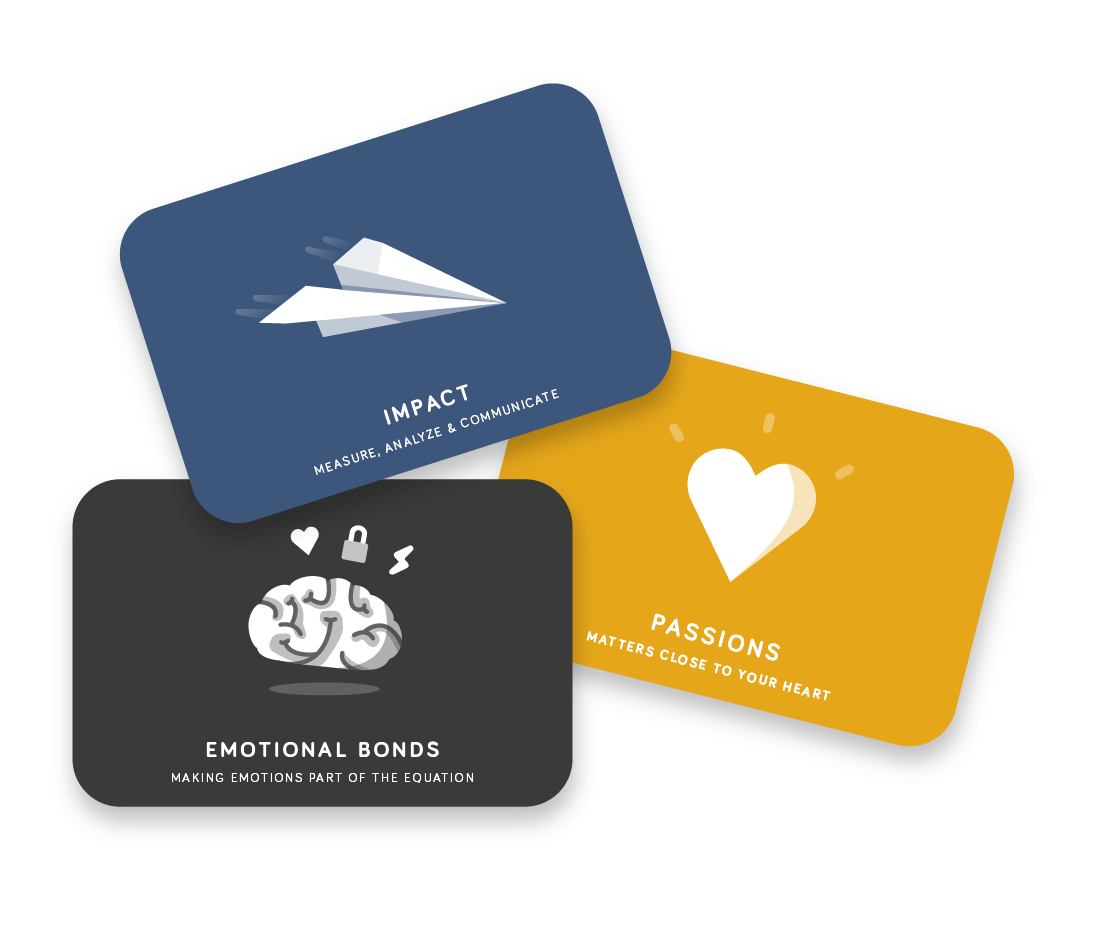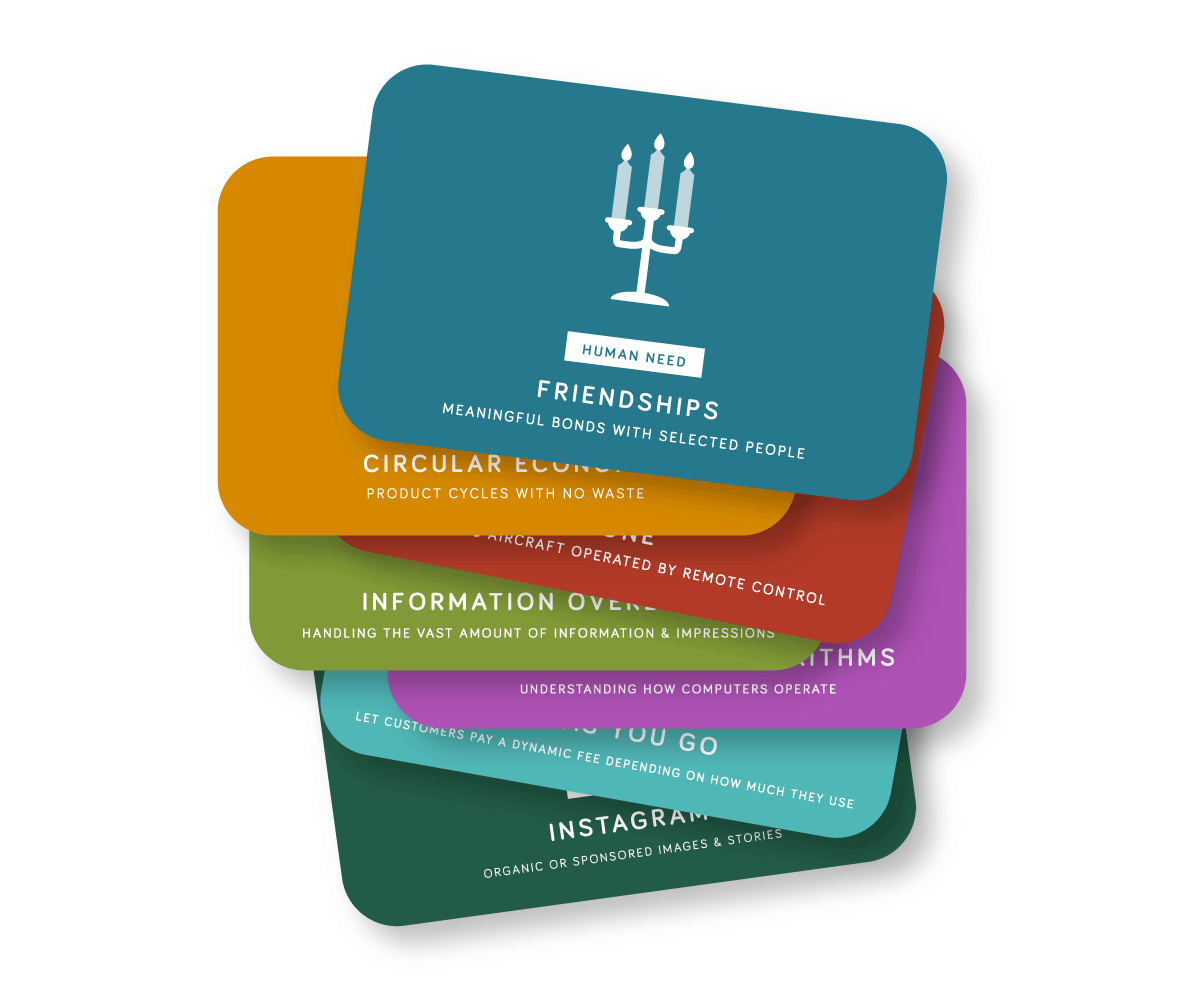HOW TO USE
The Guide
Cards are flexible. They can be sorted, clustered, stacked or laid out. Below we describe how cards can be used in different situations. From mapping to ideation.
This video shows how one of our kits can be used.
1. Start
You need to start somehow. Here are descriptions of different ways of beginning.
![]()
Unfold & discuss
We normally say that the most important part is getting the cards out on a table.
Keeping the deck as a stack doesn’t provide overview.
Just looking at all cards might help you to connect and understand the big picture. How do you work with these. Can they be discuss as a whole. What does the overview tells you?

Define the scope
The kits can be used in everything from overviewing big structures like an organisation to talk about smaller projects. What perspective you choose to work with the cards are up to you.
Not all projects contain the same parts, and not all perspective are relevant in each project.

Make an agenda
Use a kit to decide what to bring up during a meeting. Pick cards you find most urgent and/or important an discuss them during the meeting.

2a. Map & define
Cards.. or what the text says on the cards can be viewed and thought about in many different ways and aspects. A good way to make sure your are thinking about the cards from the same angle is to start out by defining what they mean for each individual in the group. That way the group as a whole looks at the cards in the same way onwards.
![]()
How to think about cards
This could be a few cards on a wall together with post-its or it could be in an exercise like the long table (Where you write on a table with paper wrapping).
You can talk & think about the cards from a general standpoint or from a specific project. You can also decide to focus on different layers of the cards. Read more about card layers here.
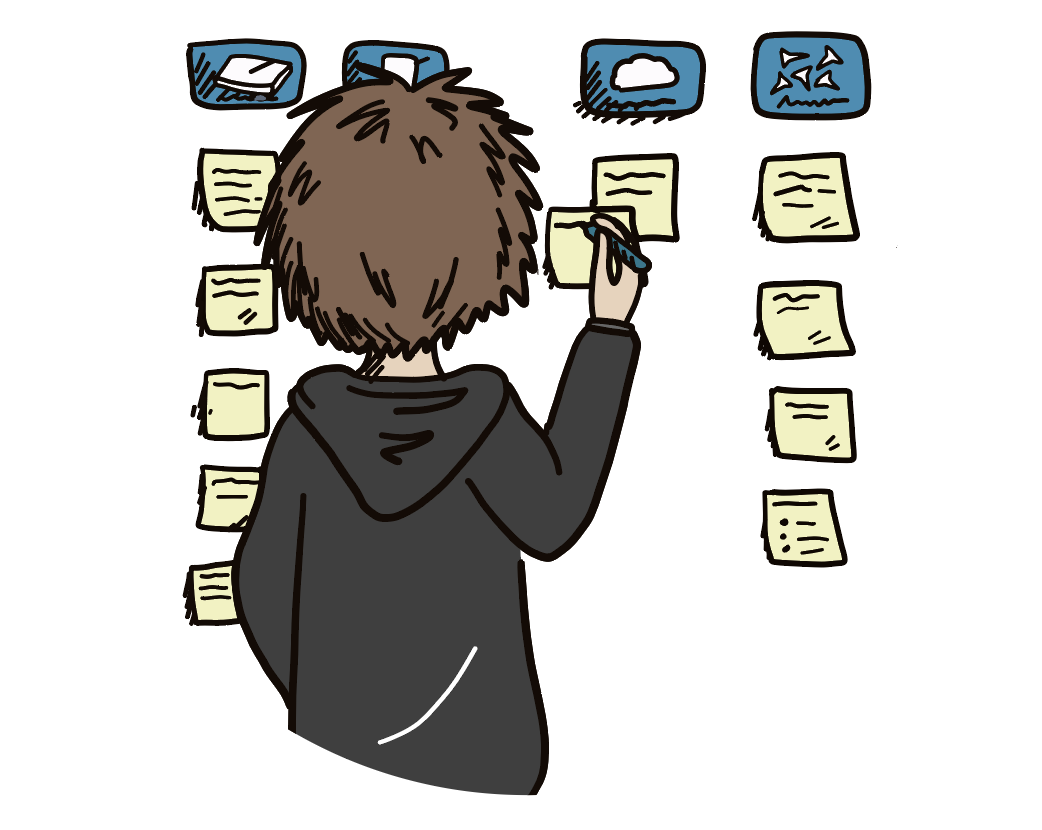
With post-its
Using a row of cards and defining each card in columns.
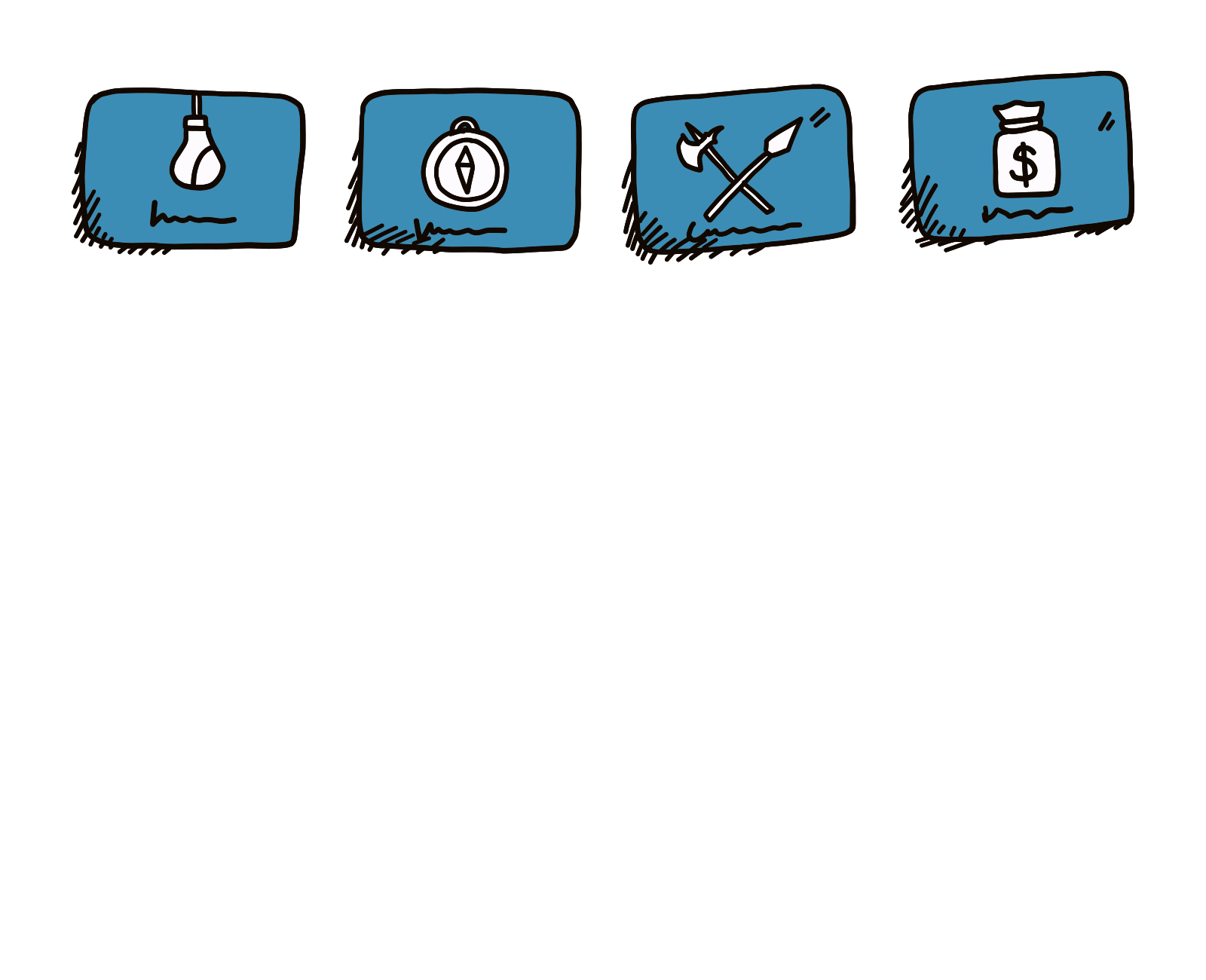
Or cluster post-its around each card.
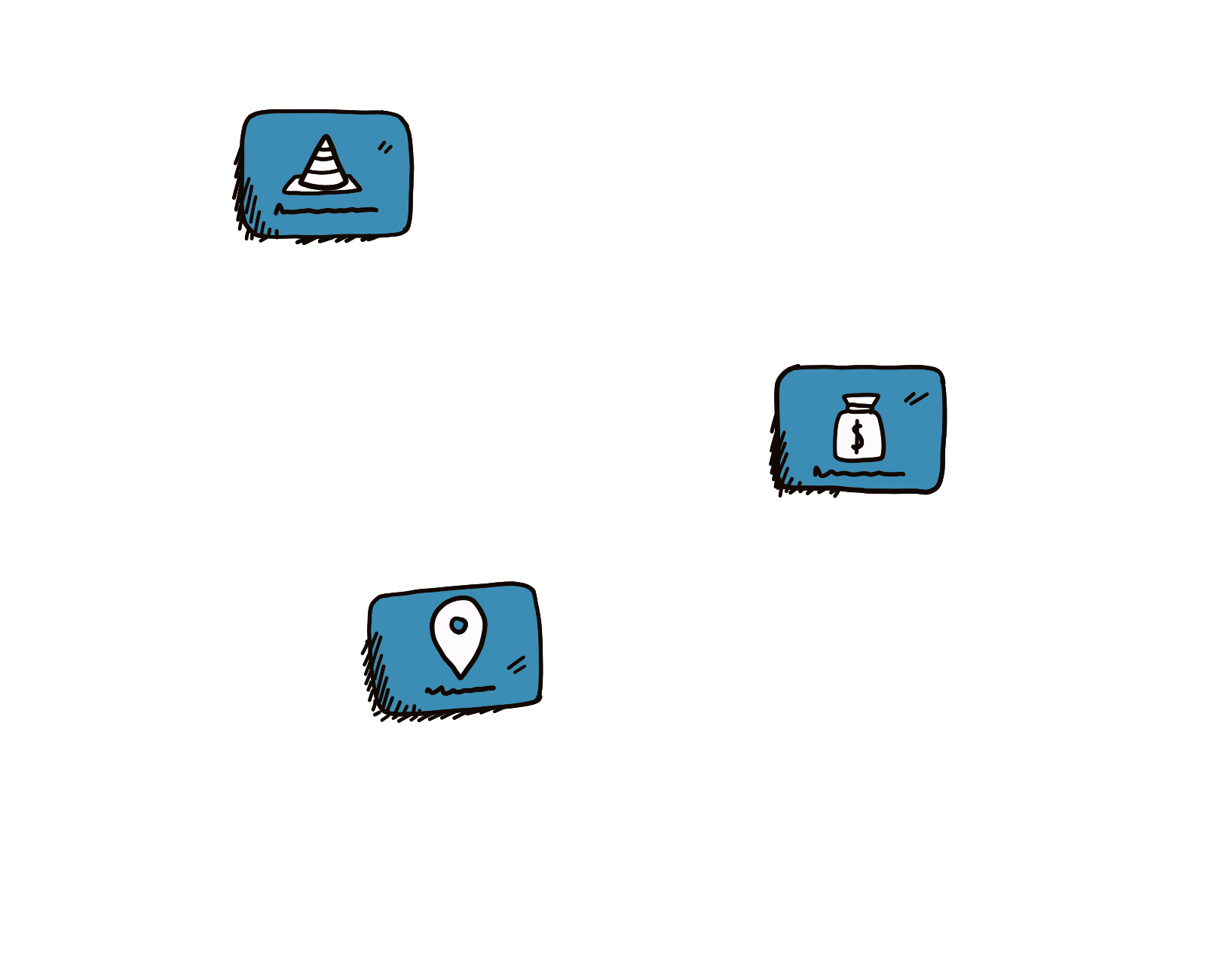
2b. Map & define, with layers
Card layers help you understand what to write on the cards. Sometimes people just write down what comes to mind, this help you be a bit more structured in what types of thoughts to put down on paper.
![]()
Use rows to define different layers with post-its
Using different post-it colors to represent a different layers of a card.

Pen colors
Use different pen colors to represent different layers.
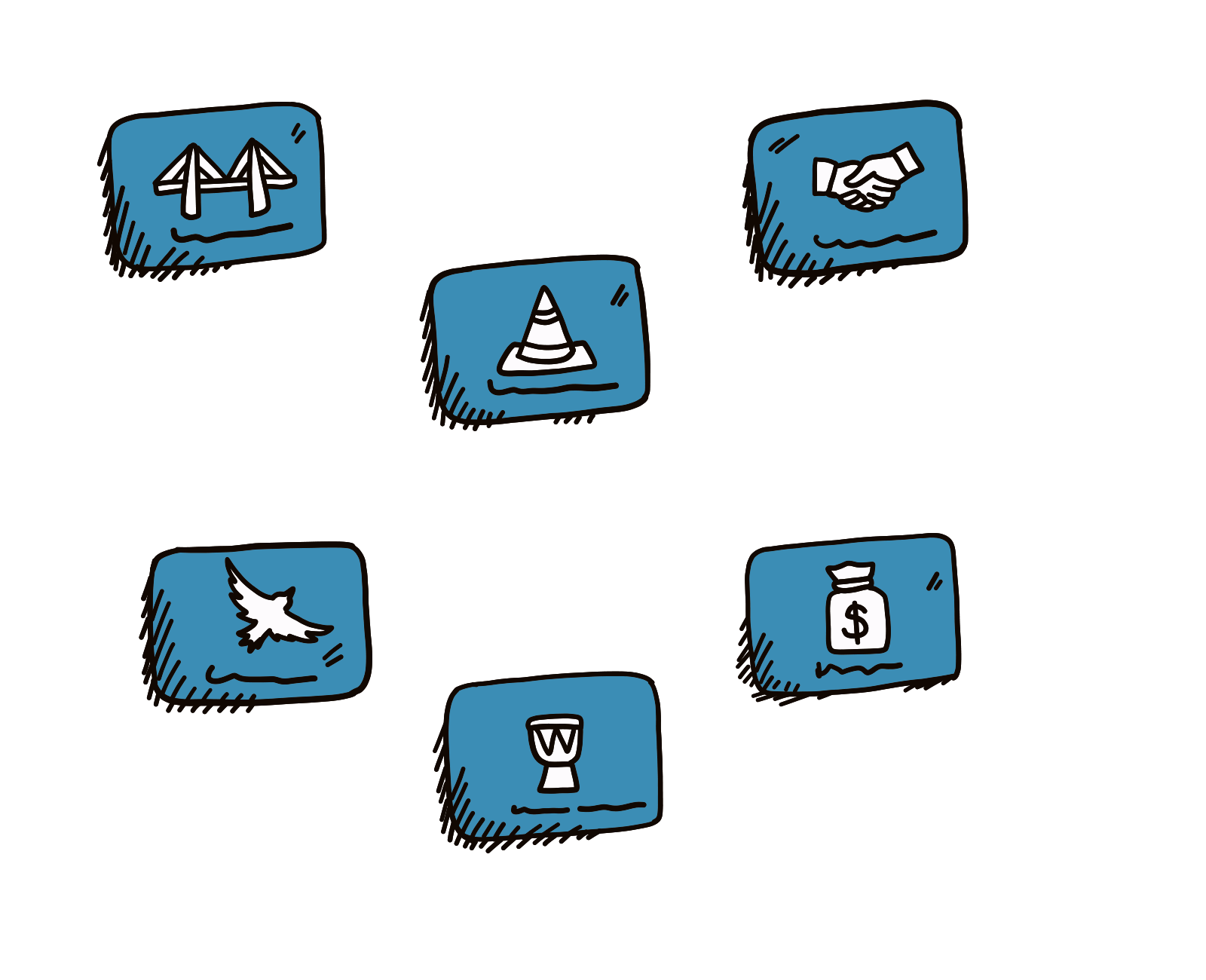
Using rows on a long table
People write on the paper cloth where the rows represent card layers. Scotch tape are used on the paper cloth to divide the rows. Each card represent a column, so all things related to each card are only written in that column.
Example of rows could be
- Current situation
- Vision
- Steps forward (going from current to vision)
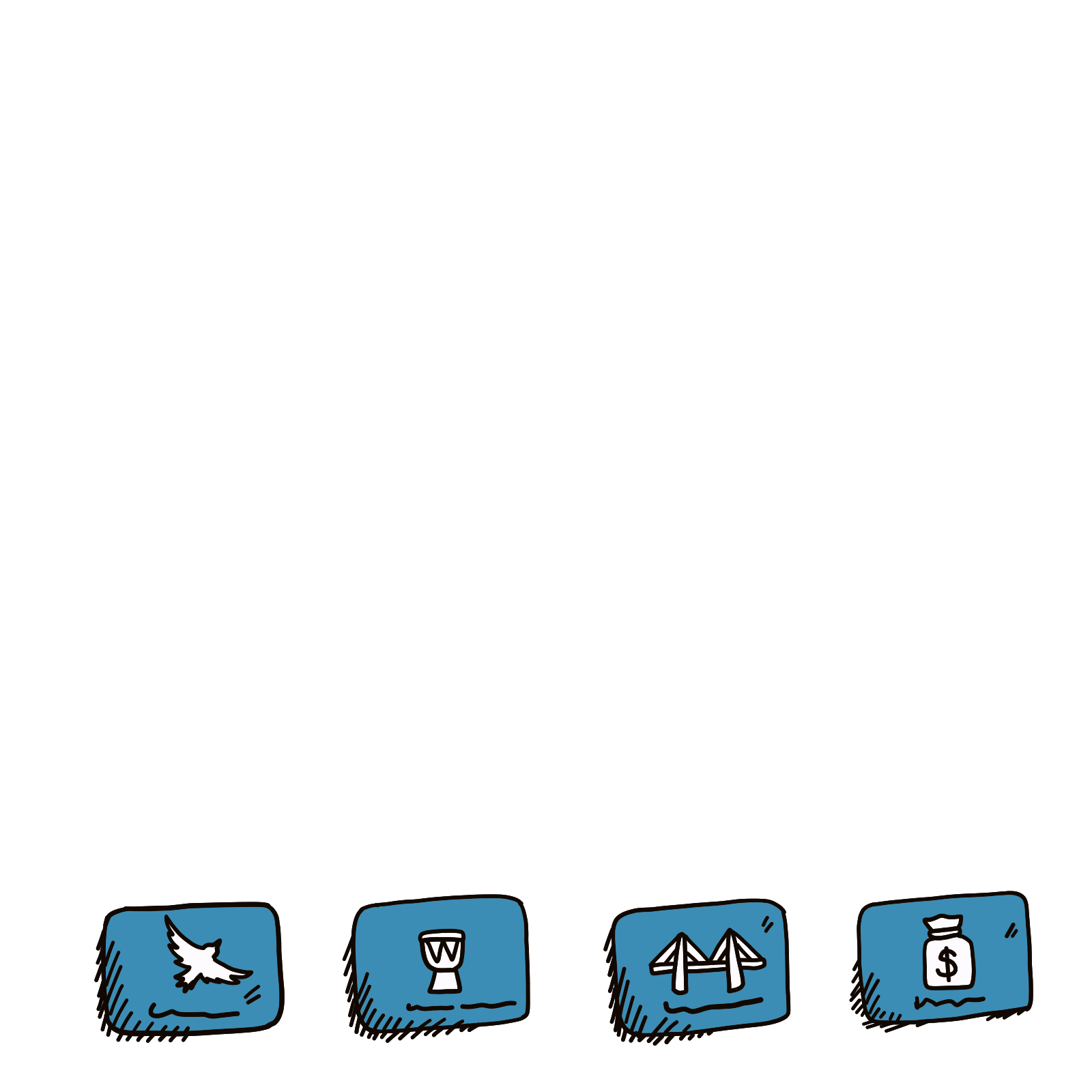
Align
Often we think that we have more common ground than we think. Working seperately to begin with help you to unfold how you think similar and differently about different topics.
Lay out the cards as a tower. sit on each site of the tower and start defining the different cards in silence.
When you are ready. Lay them out and start discussing. We recommend you to create a third sticky note to define the point where you find common ground.
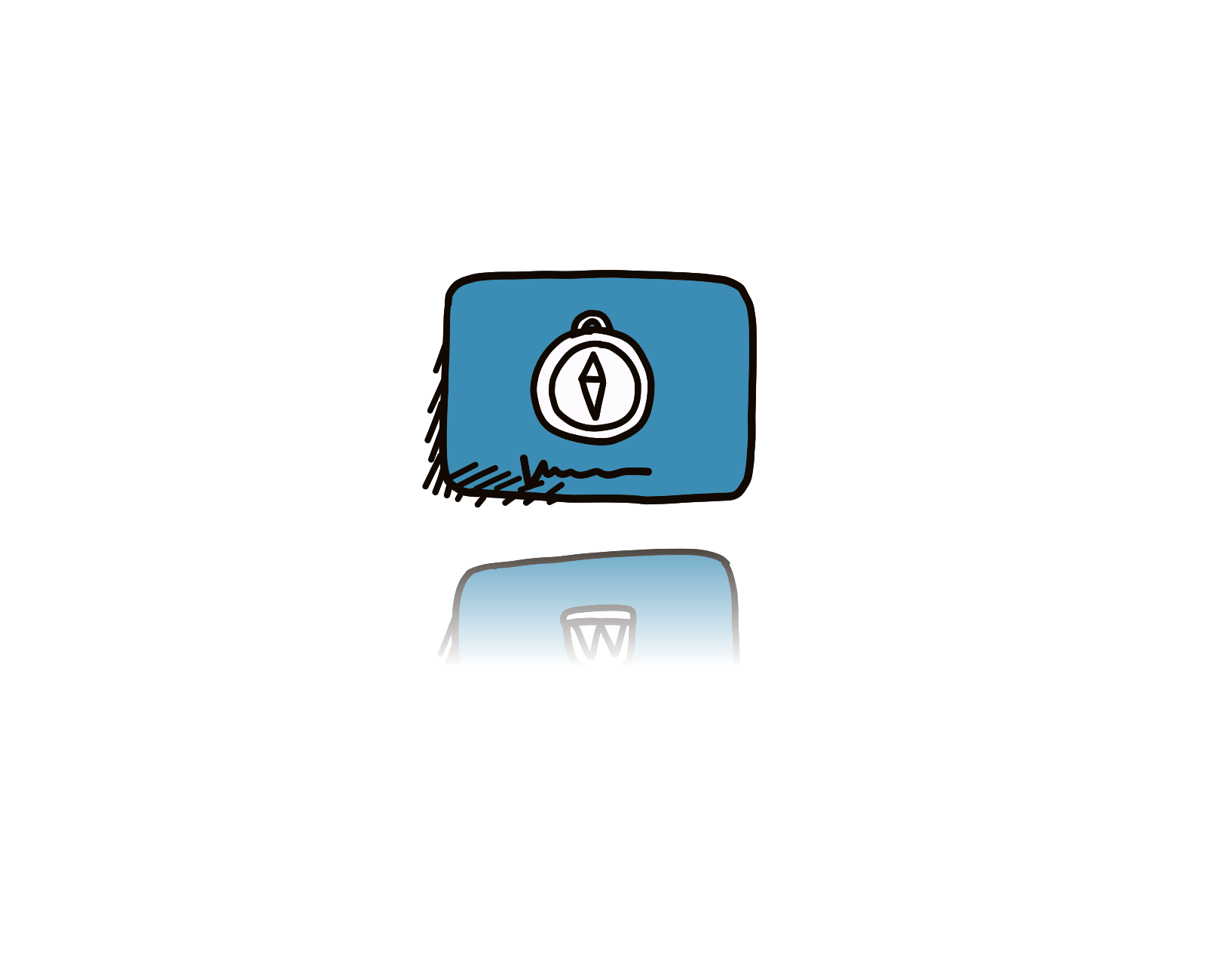
Cards in grids (as rows & columns)
Define the intersections of two kits.

3. Sort & cluster
We love to label and sorting up. It helps us to see the bigger pictures but also to know what we feel. To compare and give our statements as individuals in a group makes it clear what the group as a whole feels. From there it is easier to move forward.
![]()
Sort the cards based on..
For example:
- Agree – Disagree
- Finished – Unfinished

Sort them in different columns
For example:
- Yes / maybe / no
- Agree on yes / disagree / Agree on no
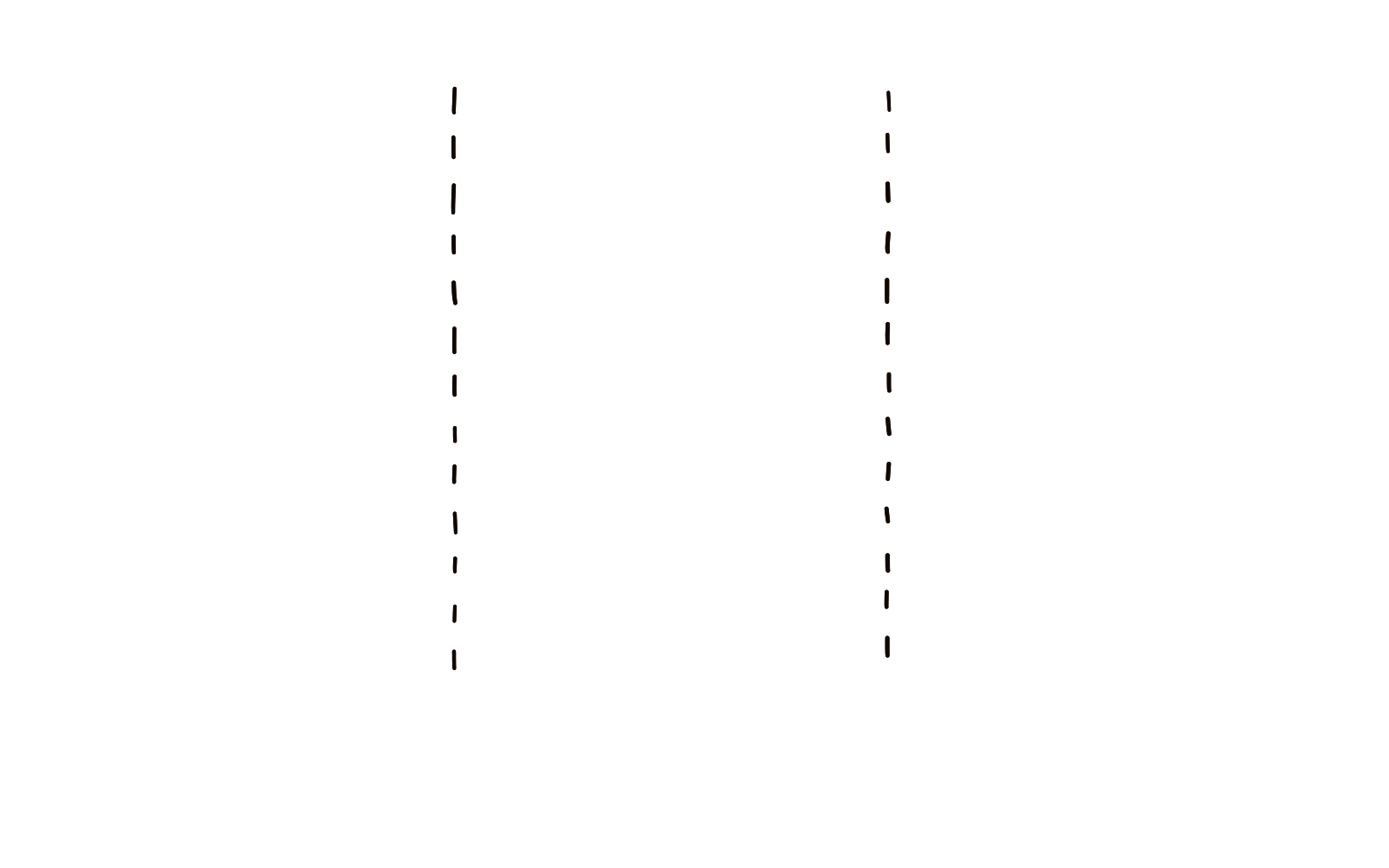
Prioritize
Select a few cards based on, for example:
- Things you need to talk about
- Things you are done with
- Things that are left to do

Roles
Who is responsible for what.

4. Ideate
Whether you want to improve something, solve a challenge or create a new service or product you need to come up with ideas. Below we describe how the cards can help you find new ideas or develop existing ones.
![]()
Come up with new ideas
Using MethodKit with (…) cards to come up with new ideas.
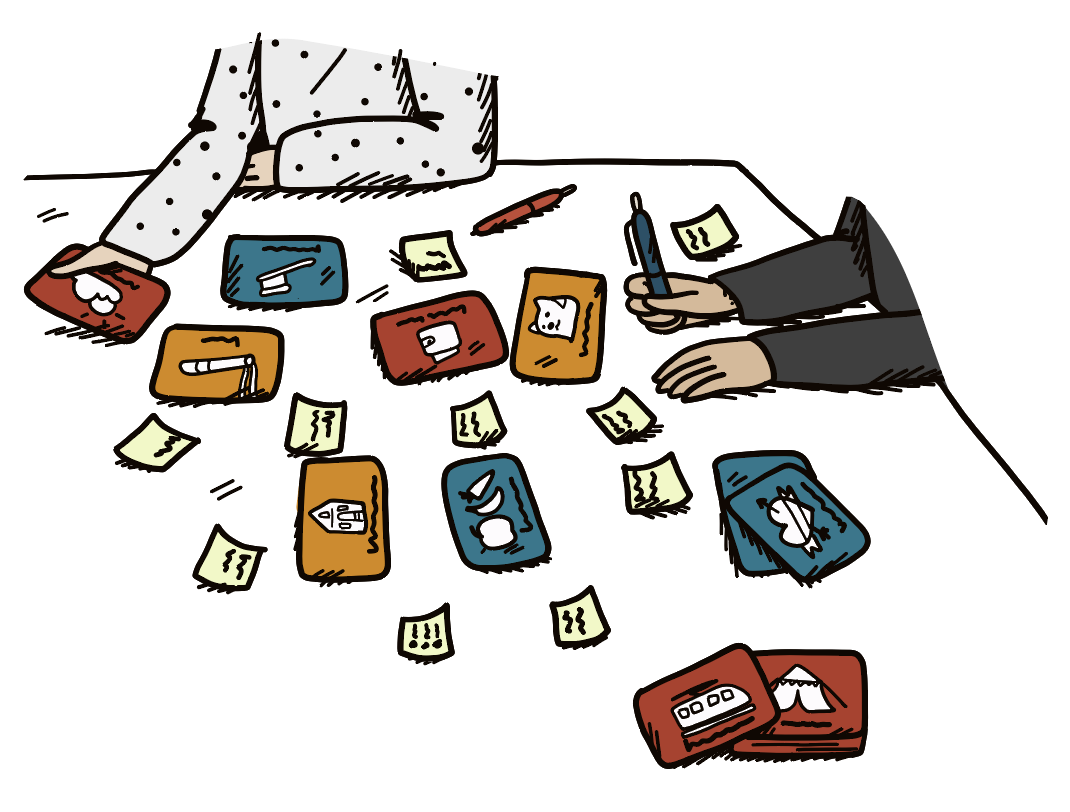
Get an overview
The most important part is getting the cards out on a table.
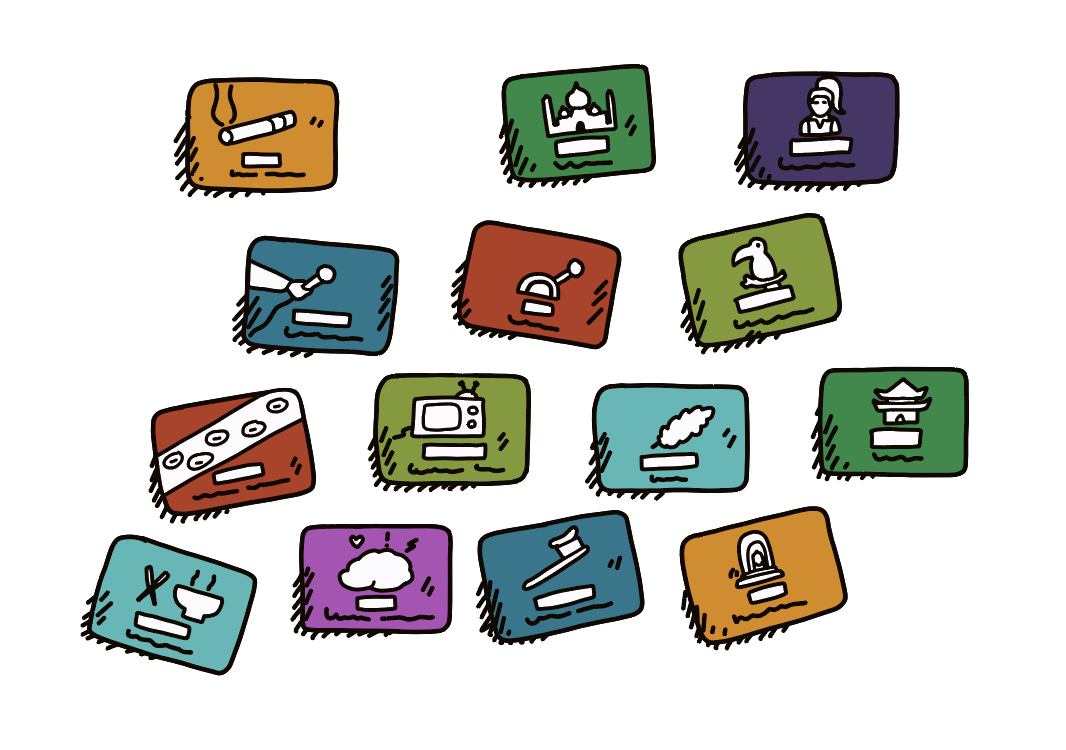
Work with one card
Focus on one card for some time can be very efficient. Write down everything you can think about related to that card on post-its and surround the card with them.
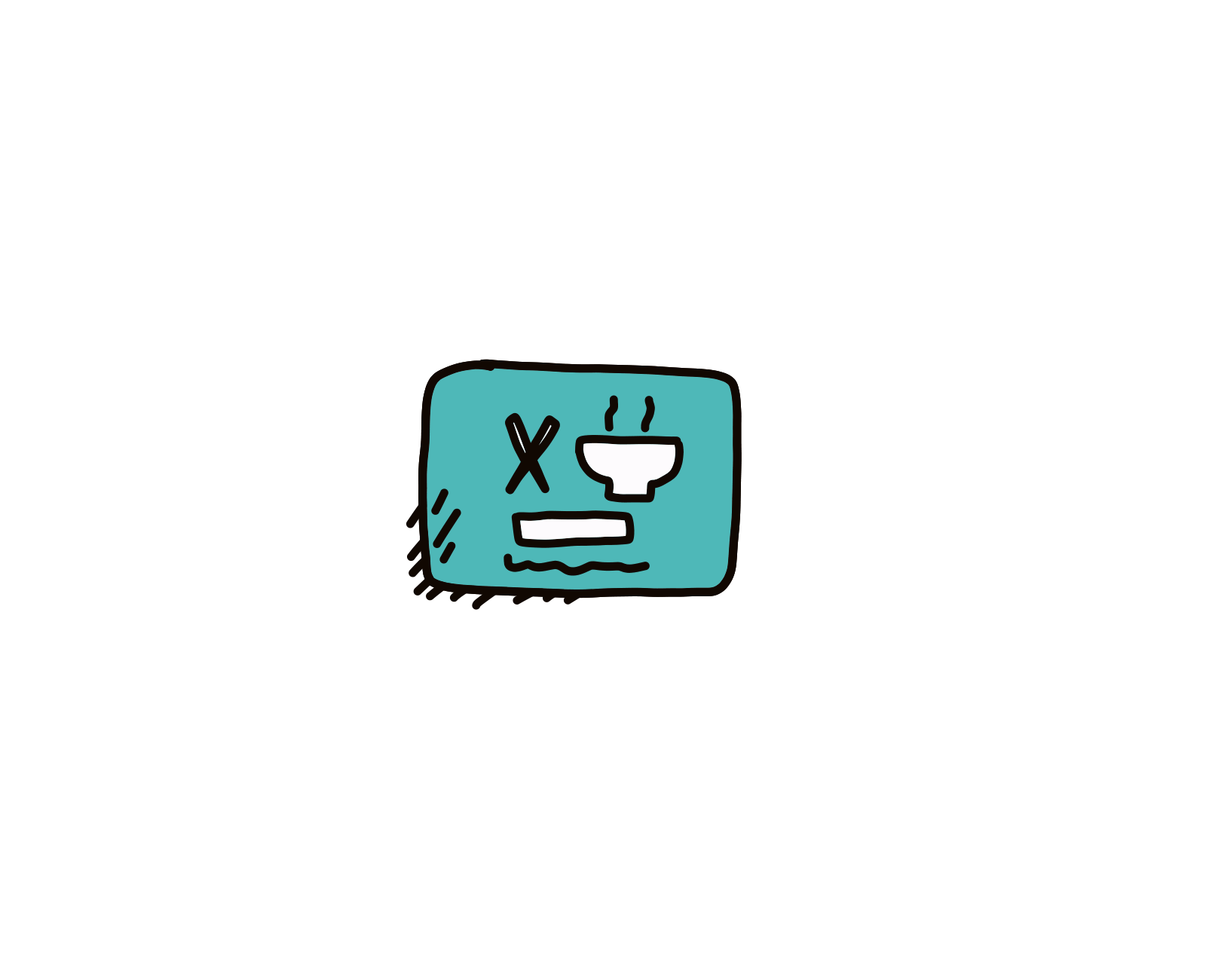
Combine cards
Come up with ideas by combining different building blocks.
Example: Think about different perspectives of a project, city or society (MethodKit for…). Think about how different building blocks (MethodKit with…) can be used to create a solution for that perspective.
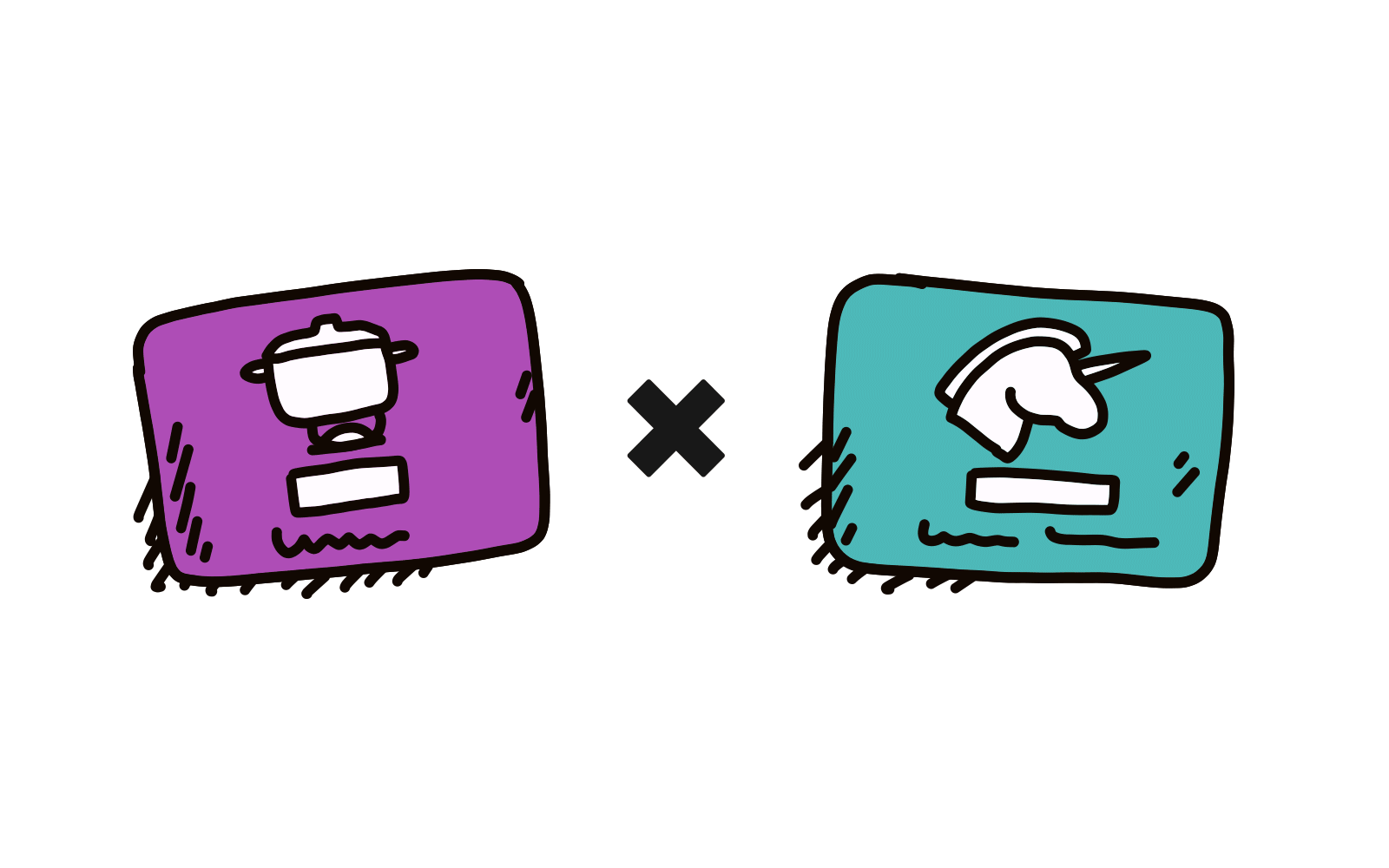
Improve cards
Combine an idea with a building block to see how it can be improved or changed. Write up the new idea on a sticky note.
All ideas you generated can later be assessed.
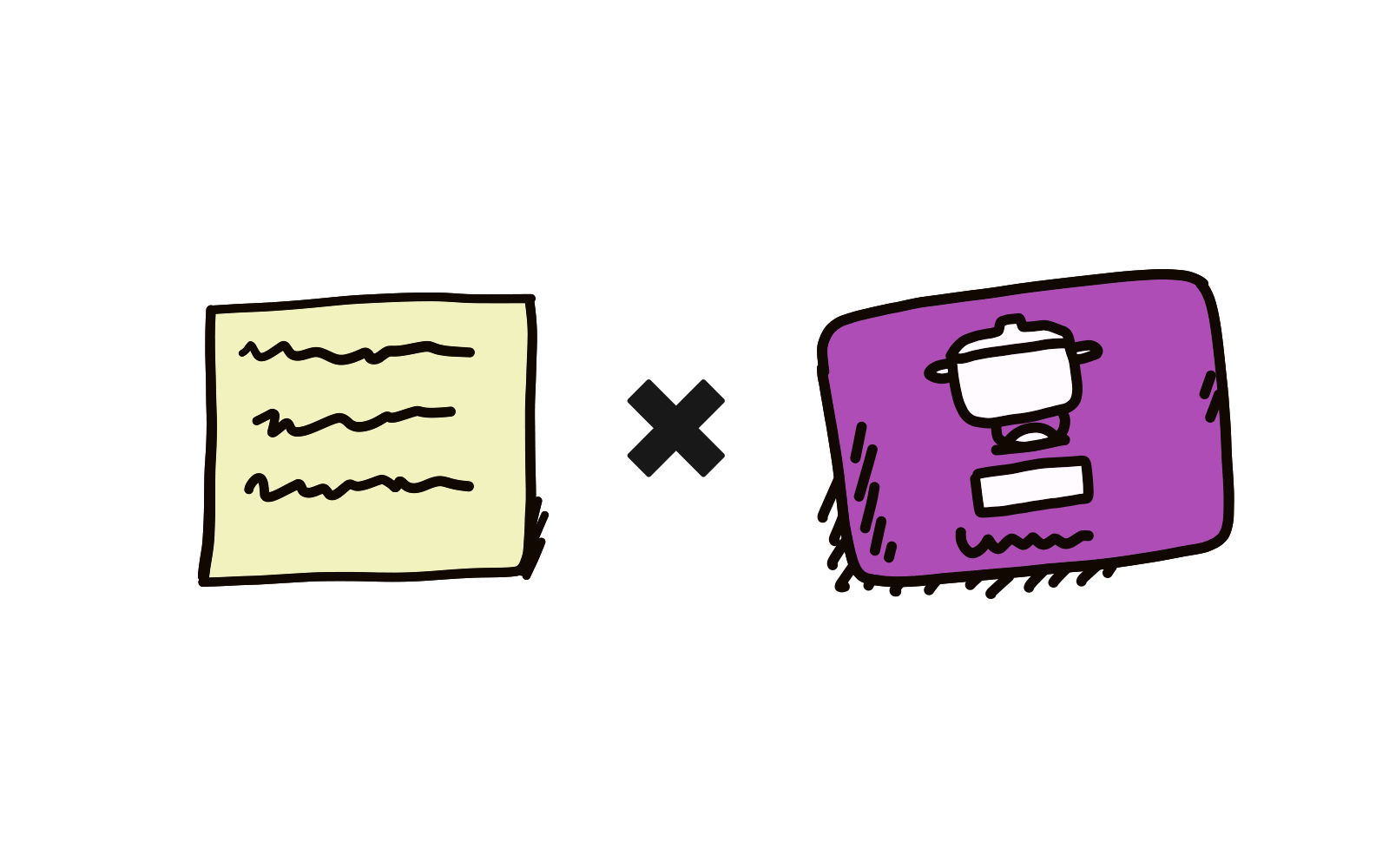
New ideas per card
All kits can be used for ideation.
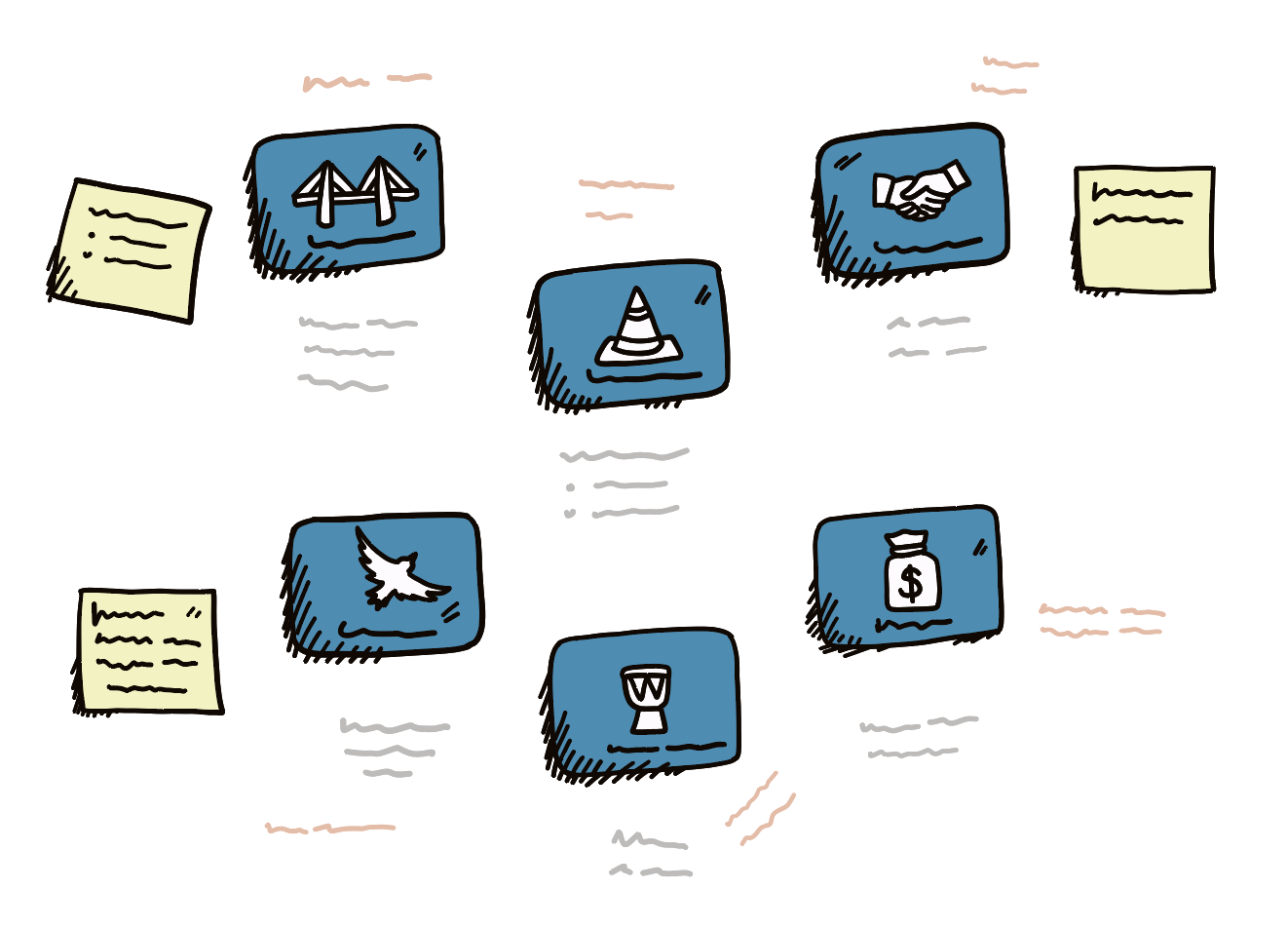
What if…? or How might we…?
Use the cards to explore a specific problem.
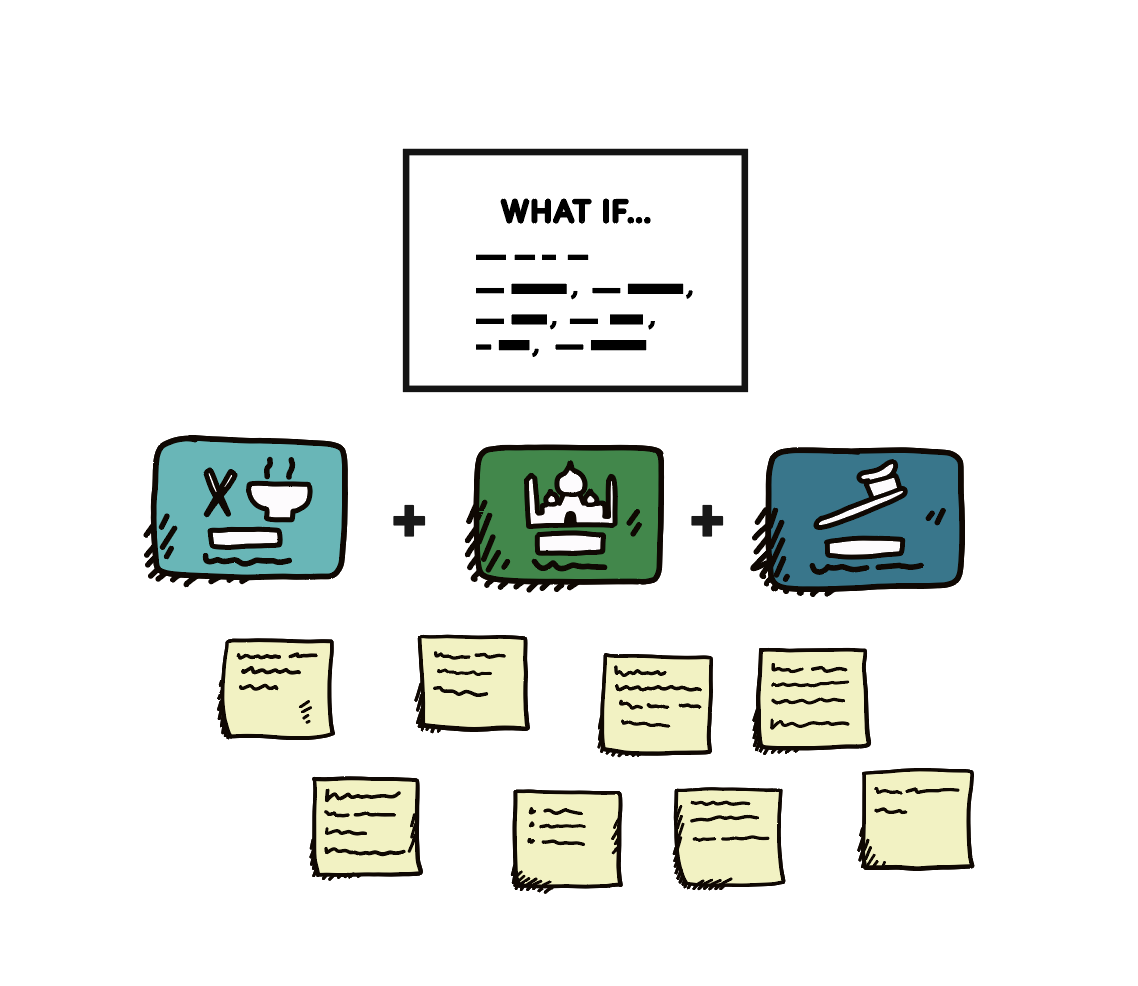
5. Select ideas
Selecting ideas can be a struggle. All these great thoughts have gathered into one big bowl of unstructured possible greatness. A great way to go forward from here is using structuring techniques to cluster the ideas to get an overview.
![]()
Assess ideas using a matrix
Example:
Lower left – Not original nor useful
Lower right – Not original, but useful
Upper left – Orginal but useless.
Upper right – Both original and useful.
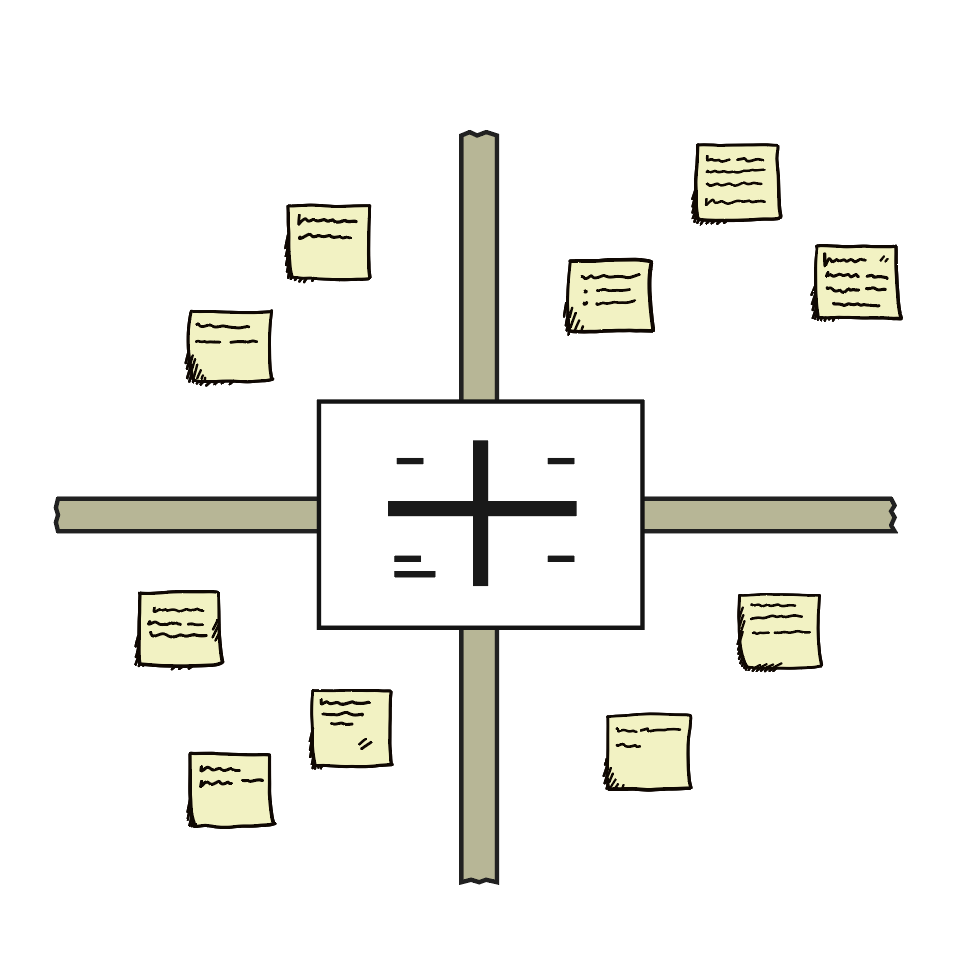
Different kits
Most of the 45 kits we released could be sorted into two main categories.
